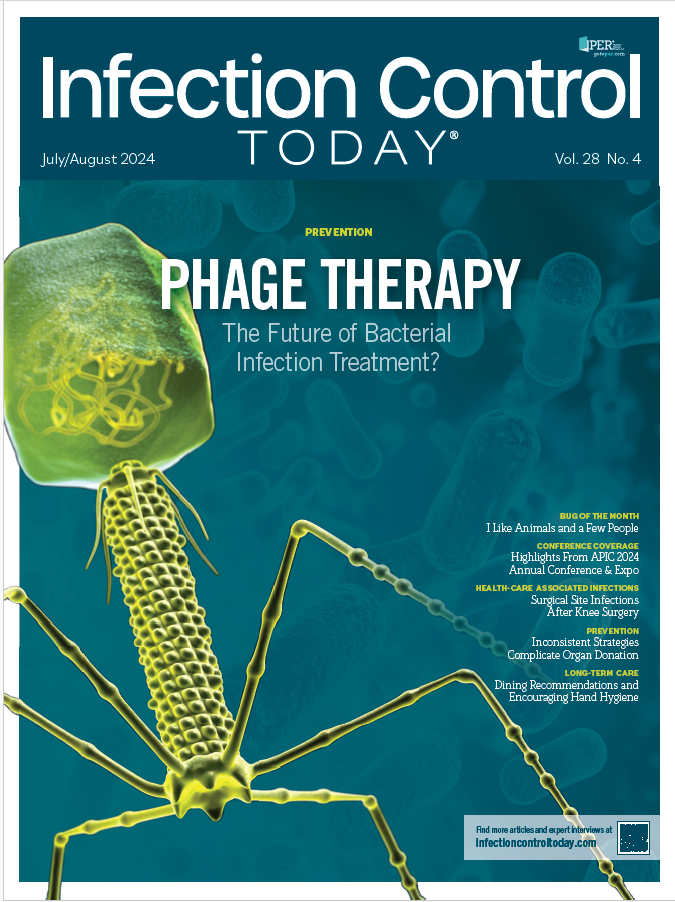APIC Launches PolicyPro for Infection Control and Prevention
Infection preventionists can now streamline policy management with APIC’s PolicyPro, a subscription-based platform offering customizable, evidence-based IPC policies for health care facilities.
Infection preventionists (IPs) have often struggled to write policies for their facilities. Sending hours to create and update policies that follow federal and state guidelines for their facilities, IPs need a resource where they can go to get already-written policies and get back to the work they need to do—fight infections.
Recently, the Association for Professionals in Infection Control and Epidemiology (APIC), at the 2024 Annual Conference & Exposition held June 3 to 5 in San Antonio, Texas, announced the launch of PolicyPro. It is an infection control and prevention (IPC) policy library and management system of policies. Created by APIC's IP experts, this subscription-based management platform will allow health care organizations to adopt, manage, and customize IPC policies based on tried-and-true evidence.
Currently available for acute care and hospital policies, PolicyPro's policies for long-term care and ambulatory will be available in late 2024 and 2025.
The system is available as an annual subscription and is built on a custom tech platform. It currently offers 28 prewritten policies designed for hospitals. Each policy template is fully referenced with instructions on how to customize and add specificity. PolicyPro content is regularly reviewed and updated to ensure it aligns with the latest guidance and regulations. New policies are added to the online library as they are developed, providing subscribers with access to the latest content.
To learn more, Infection Control Today® (ICT®) spoke with Heather Saunders, MPH, RN, CIC, the nurse research program manager at Johns Hopkins University, and the senior IP consultant for Broad Street Prevention; and Stephanie Mayoryk, MAS, BSN, RN, CIC, the infection preventionist, and principal consultant at Mayoryk Consulting Services.
Heather Saunders, MPH, RN, CIC; Stephanie Mayoryk, MAS, BSN, RN, CIC; with Tori Whitacre Martonicz, MA, senior editor of ICT.

“As an IP, I've spent hours and endless nights trying to write policies and procedures while also trying to juggle all of the responsibilities of an infection preventionist,” Saunders told ICT. “So, we're excited to offer this resource to our fellow colleagues and give us a standardized platform of policies and procedures that we have together created with a group, a multidisciplinary group of experts in the field.”
Mayoryk explained how this new resource began and will be continually updated. “We've worked very collaboratively with [many] authors and reviewers to make sure that the content is correct, that the references are there to support your work, and that there is also an opportunity for you as the end user to provide feedback. If you want to see an additional policy be added, that direct feedback to APIC is there and important.”
Mayoryk and Saunders also thanked the writers and reviewers, the APIC board of directors, and the education team for their work on this project. Their work has saved IPs in the field immeasurable time.
The current "Basic" functionality is designed for use by individual users in a single facility. In late 2024, APIC will introduce "Premium" functionality, which will enable multiple users within a single facility to collaborate on policy development and distribution. In 2025, "Enterprise" functionality will be introduced, allowing health care systems to collaborate and standardize policy development across multiple facilities.

Robust infectious disease surveillance, including rapid subtyping of influenza A, is essential for early detection, containment, and public health reporting of novel viral threats.
























